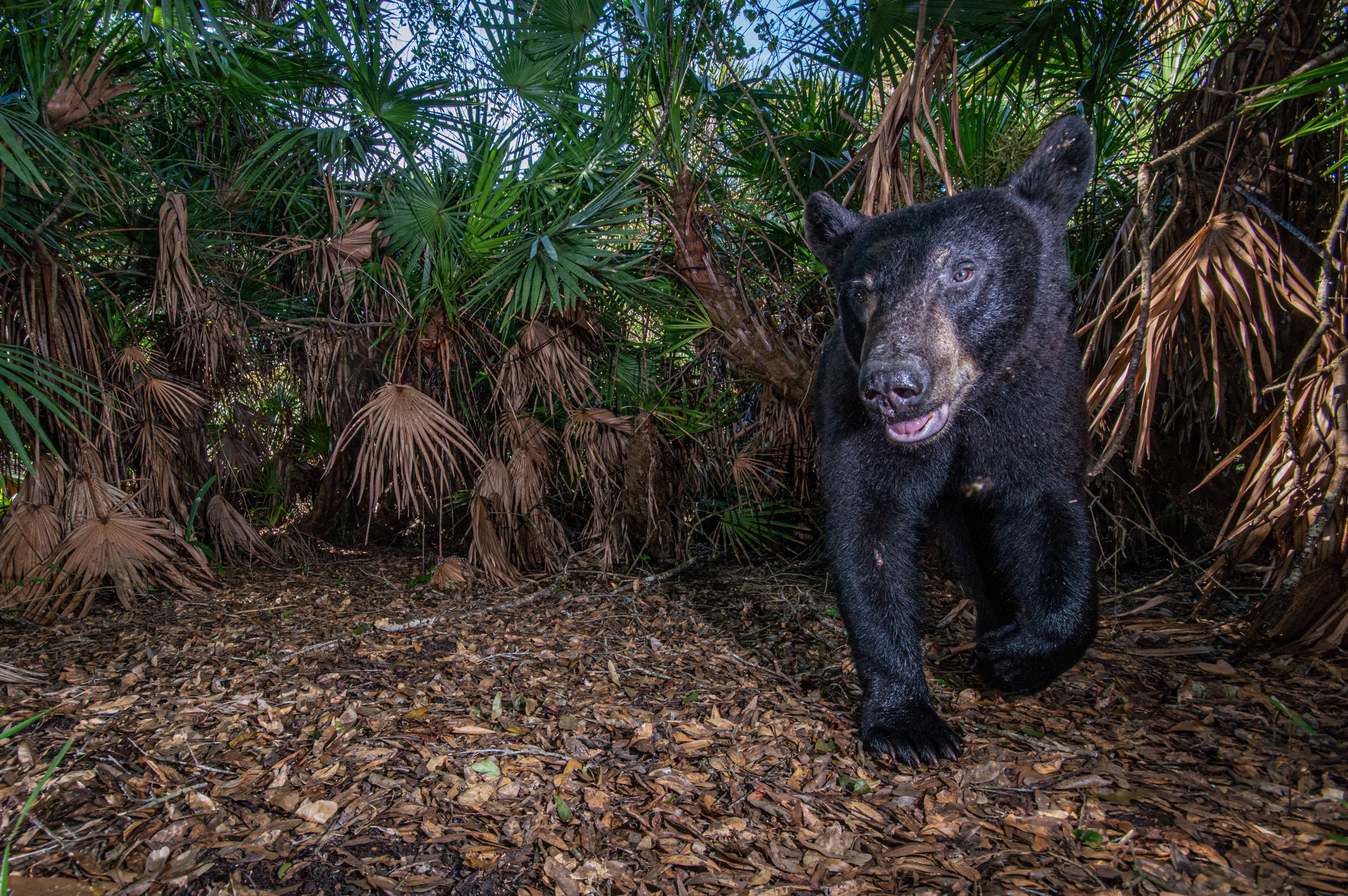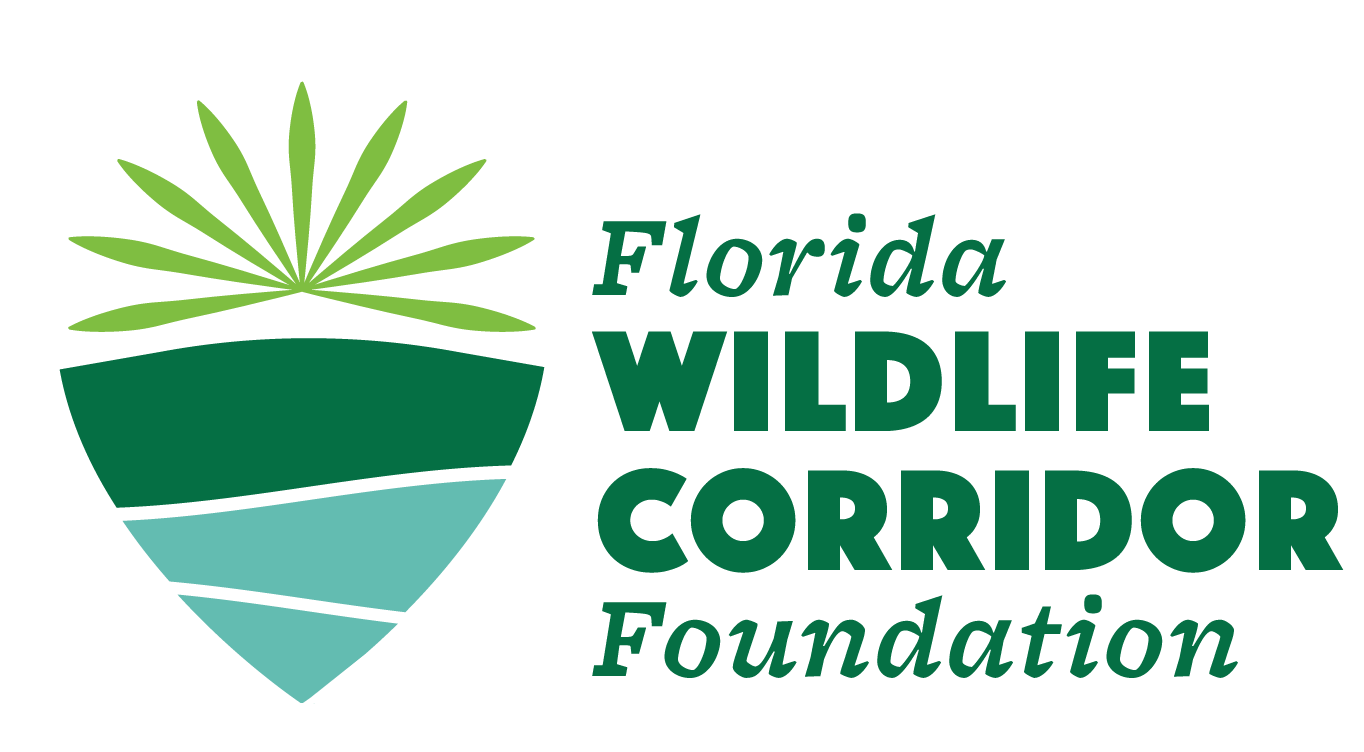Corridor Foundation Headquarters
by muralist Ernesto Maranje
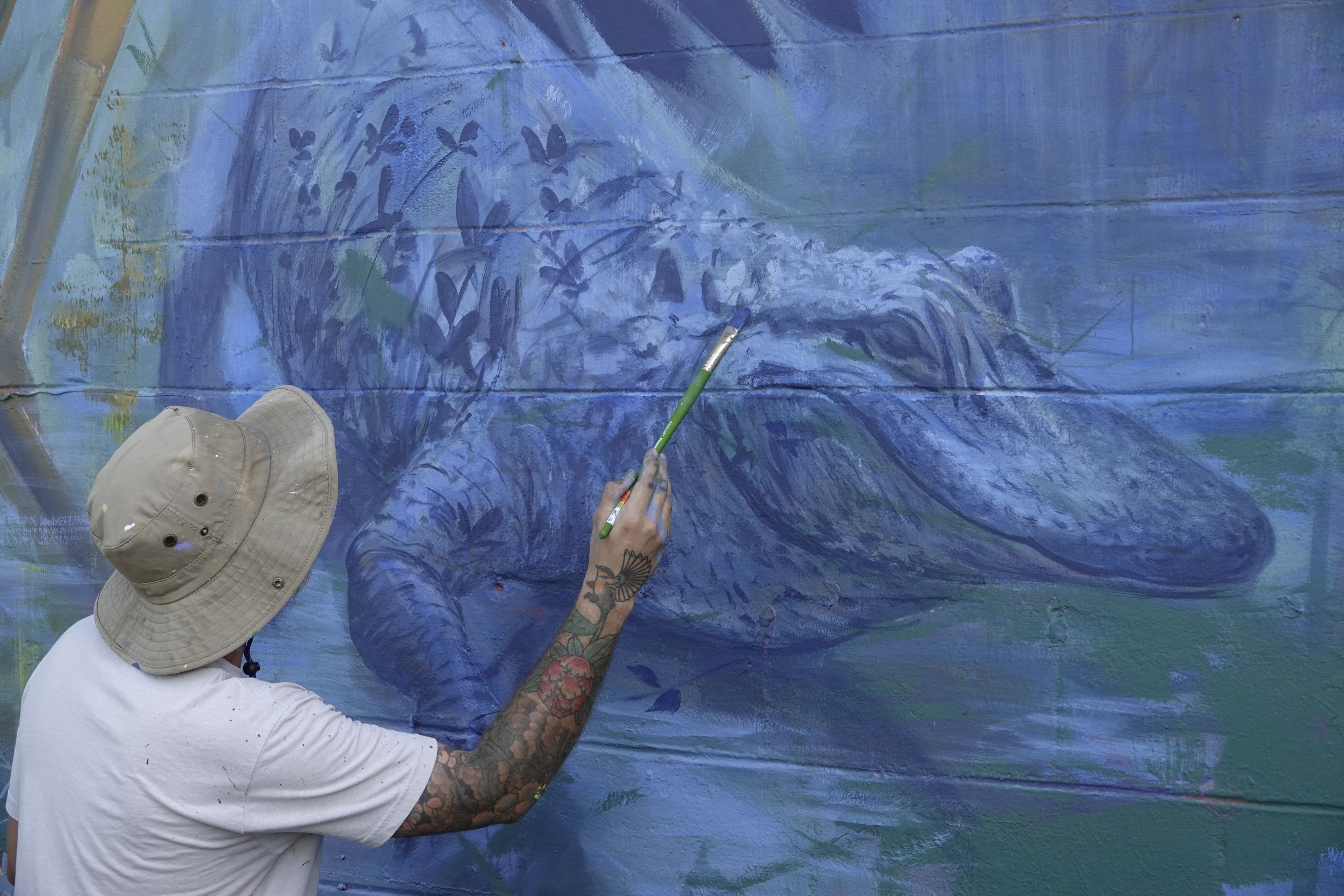
The Florida Wildlife Corridor is an
18-million-acre statewide network of connected lands and waters that supports wildlife and people.
Seen in dark green, 10 million acres are protected as Federal lands, state parks and forests, or private lands under conservation easements.
The remaining 8 million unprotected acres in light green are opportunity areas for conservation and are mostly comprised of agricultural working lands, such as cattle ranches and timber land. Not only do these valuable spaces provide food and fiber for Florida and our nation, but they also provide interconnected landscapes that keep Florida’s wild spaces connected.
Our Mural Campaign is aimed at raising awareness of the importance of the Florida Wildlife Corridor.
The Florida Wildlife Corridor Foundation’s headquarters is located in St Petersburg’s newest arts enclave, “The Factory.” These repurposed buildings and warehouses, 91,000 square feet in size, are home to numerous artists and organizations, as well as the Fairgrounds St. Pete, an immersive art experience.
We were thrilled to partner with internationally recognized artist, Ernesto Maranje, to showcase the beauty of wild Florida on our front entryway. This continues our legacy of engaging influential artists and communicators throughout the state to promote our vital mission.
Ernesto Maranje is a Cuban-American artist born in Chicago, Illinois in 1983 and raised in Miami, Florida. He discovered his interest in art at 27 while serving in the Coast Guard.
Ernesto’s work explores flora and fauna, biological evolution, and plant and animal relationships. He renders these ideas with acrylic and spray paint on large-scale murals and canvas.
He has painted murals at home and abroad, including countries like Ukraine, Iraq, Jordan, Lebanon, Greece and Spain. Ernesto has also worked on many public art projects with cities, arts and cultural divisions, non-profits and NGOs. His canvas work has been shown in solo and group shows in the U.S. and overseas.
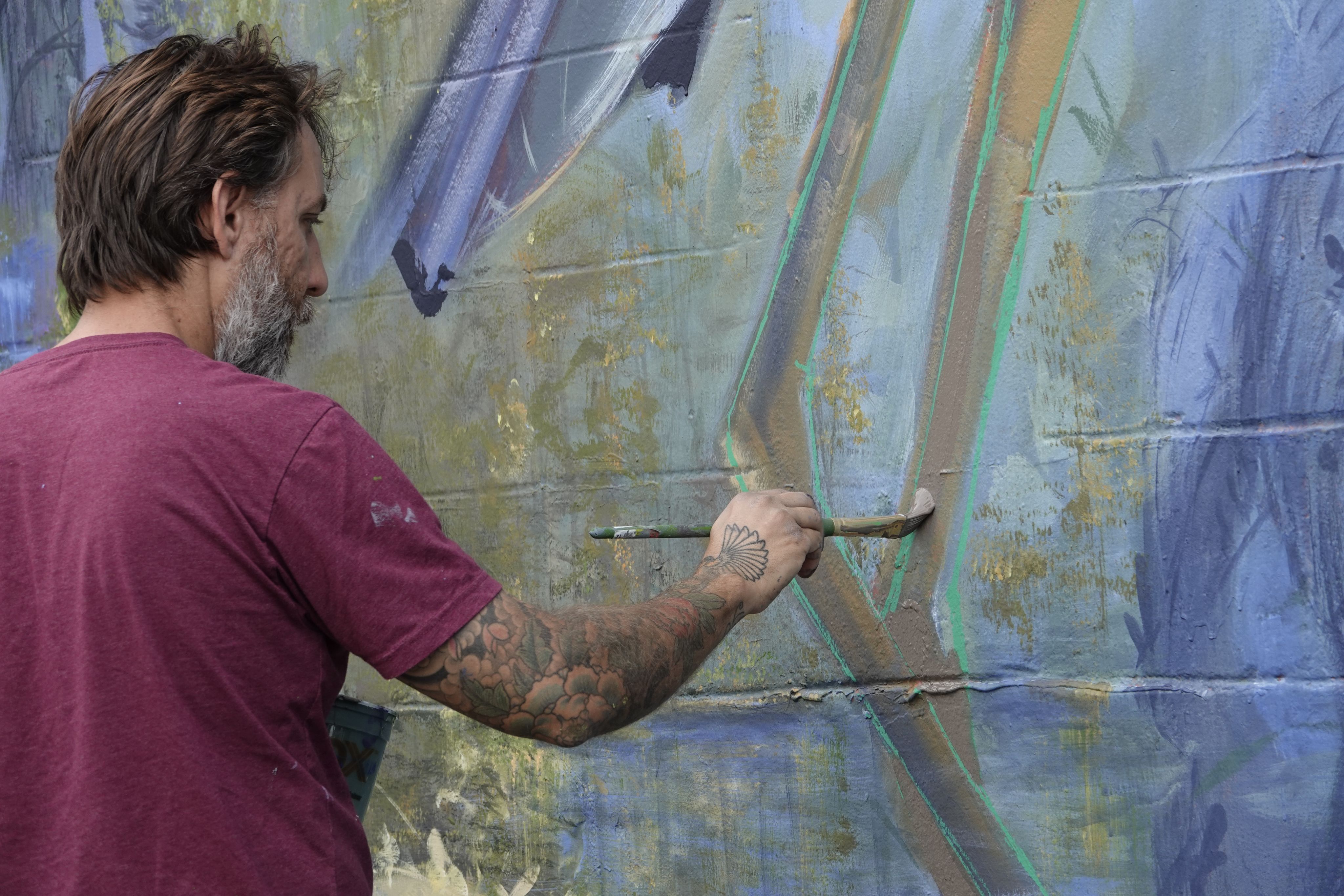
The Florida Fish and Wildlife Conservation Commission manages fish and wildlife resources for their long-term well-being and the benefit of people. Thanks to their contributions, you can learn more about the species in this mural. Scroll to learn about each of the species featured in the mural.
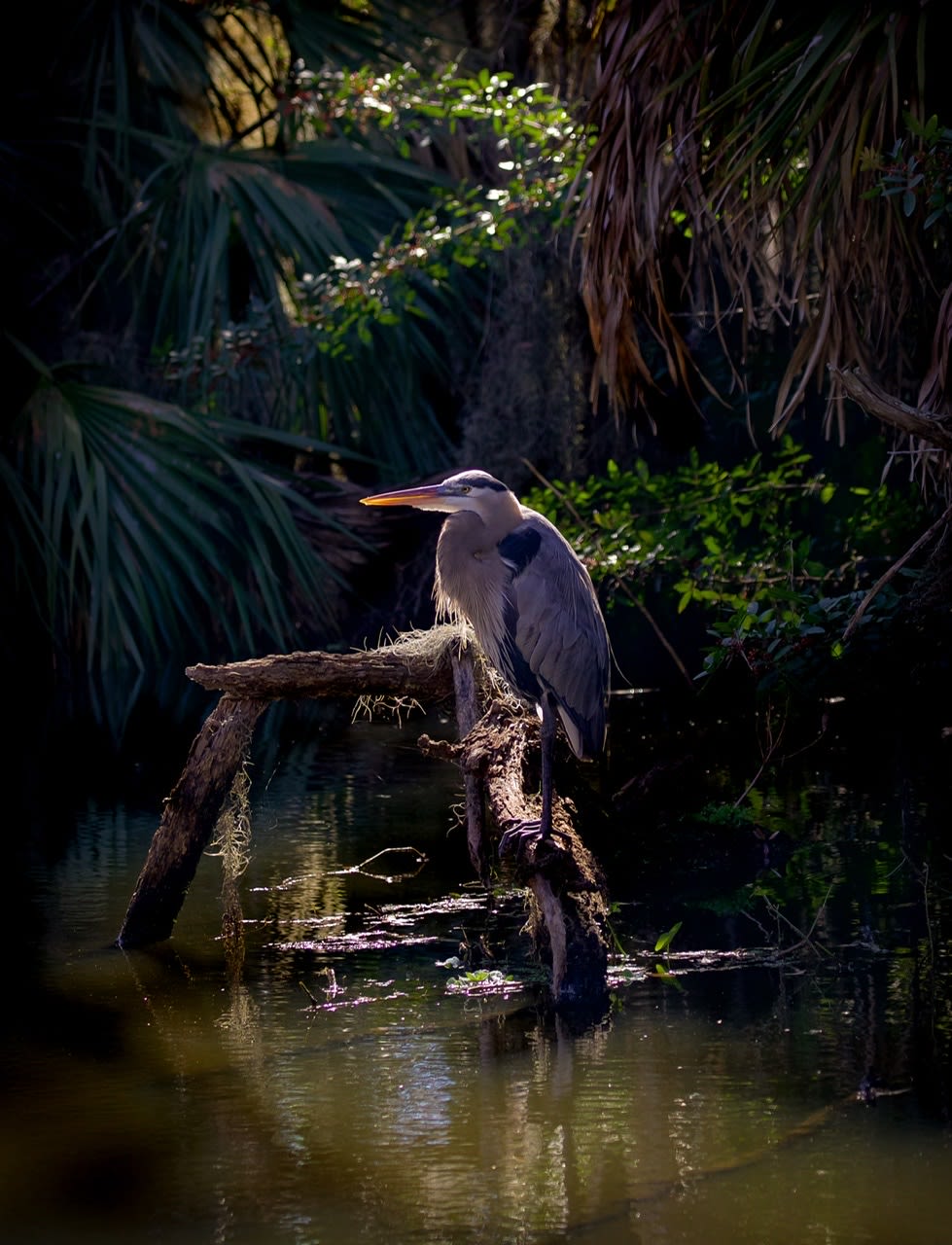
Photo by Luis Velez
Photo by Luis Velez
Great Blue Heron
(Ardea herodias)
Keep your eyes peeled for Great Blue Herons poised at river bends or cruising the coastline with slow, deep wingbeats. Great Blue Herons eat mainly fish, but have also been known to consume frogs, salamanders, turtles, snakes, insects, rodents, birds.

Photo by Linda Wilinski
Photo by Linda Wilinski
Otter (Lontra canadensis)
The river otter is adapted for both land and water with short legs, webbed toes, and a strong, flattened tail. This water-loving animal is found throughout Florida except the Keys.
River otters usually prefer fresh water and can be found in rivers, creeks, lakes, ponds, and swamps. Otters live in burrows on the bank of the water body, often under tree roots. They may dig their own burrow or remodel a beaver’s burrow.
They are social animals, and groups usually consist of a female and her juvenile offspring.
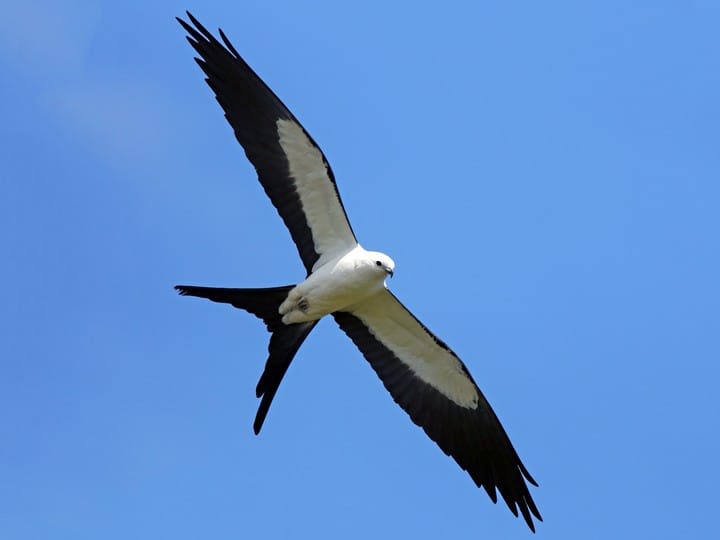
Swallow Tailed Kite (Elanoides forficatus)
After spending the fall and winter in South America, kites arrive in Florida in early March to breed. They build nests of small sticks woven with Spanish moss, preferably in tall cypress and pine. Highly social for a raptor, they nest in loose colonies and often forage in small flocks.
Kites eat all kinds of insects and small animals, including frogs, anoles and snakes. By early July, they begin to gather in large communal roosts for the migration back to South America. The future of swallow-tailed kites depends on protection of lowland forests throughout their breeding range.

Photo by Alex Freeze
Photo by Alex Freeze
Florida Black Bear
(Ursus americanus floridanus)
The Florida Black Bear is one of 16 subspecies of the American black bear and is the only bear species in Florida.
Black bears prefer habitats with a dense understory such as forested wetlands and uplands, natural pinelands, hammocks, scrub, and shrub lands, but will use just about every habitat type in Florida, including swamps.
Bears are generally solitary, except when in family groups (female and offspring) or pairings during the mating season.
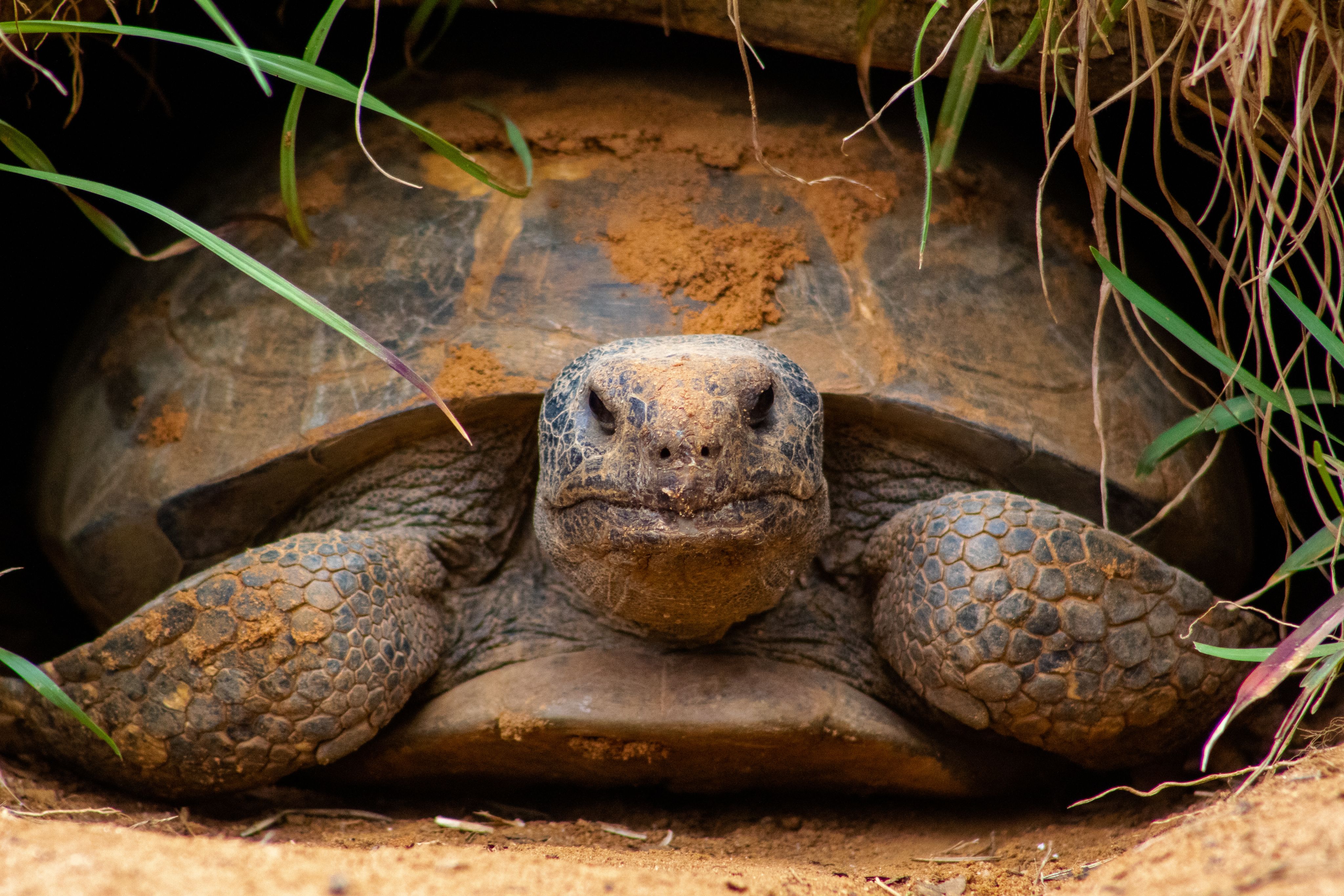
Gopher Tortoise
(Gopherus polyphemus)
Gopher Tortoises average 9–11 inches in length when fully grown, though they can reach lengths of up to 15 inches. They can live 40 to 60 years in the wild, though captive tortoises may live 90+ years.
The life of a gopher tortoise revolves around its burrow(s) where gopher tortoises spend up to 80% of their time. Burrows average 15 feet long and 6.5 feet deep, though they have been documented reaching up to 40 feet long and 10 feet deep. Their burrows maintain a stable temperature and humidity year-round, providing protection from extreme temperatures, drought, and fire.
Burrows also offer shelter from predators and provide refuge for more than 350 other species, called commensals, including burrowing owls, Florida mice, indigo snakes, rabbits, gopher frogs, and invertebrates.
Gopher tortoises are herbivorous; they feed on low-growing plants like wiregrass, broadleaf grasses, gopher apple, and legumes.
Gopher tortoises prefer well-drained, sandy soils found in habitats such as longleaf pine sandhills, xeric oak hammocks, scrub, pine flatwoods, dry prairies, and coastal dunes. They are also found in a variety of disturbed habitats including pastures and urban areas. Gopher tortoises occur in parts of all 67 Florida counties.
Periodic natural fires historically played an important role in many of the habitats where tortoises are found, as fire reduces canopy cover and promotes growth of herbaceous forage plants. When fire is suppressed from these environments, the habitat may become unsuitable for gopher tortoises. Prescribed fire is frequently used today to maintain these habitats.
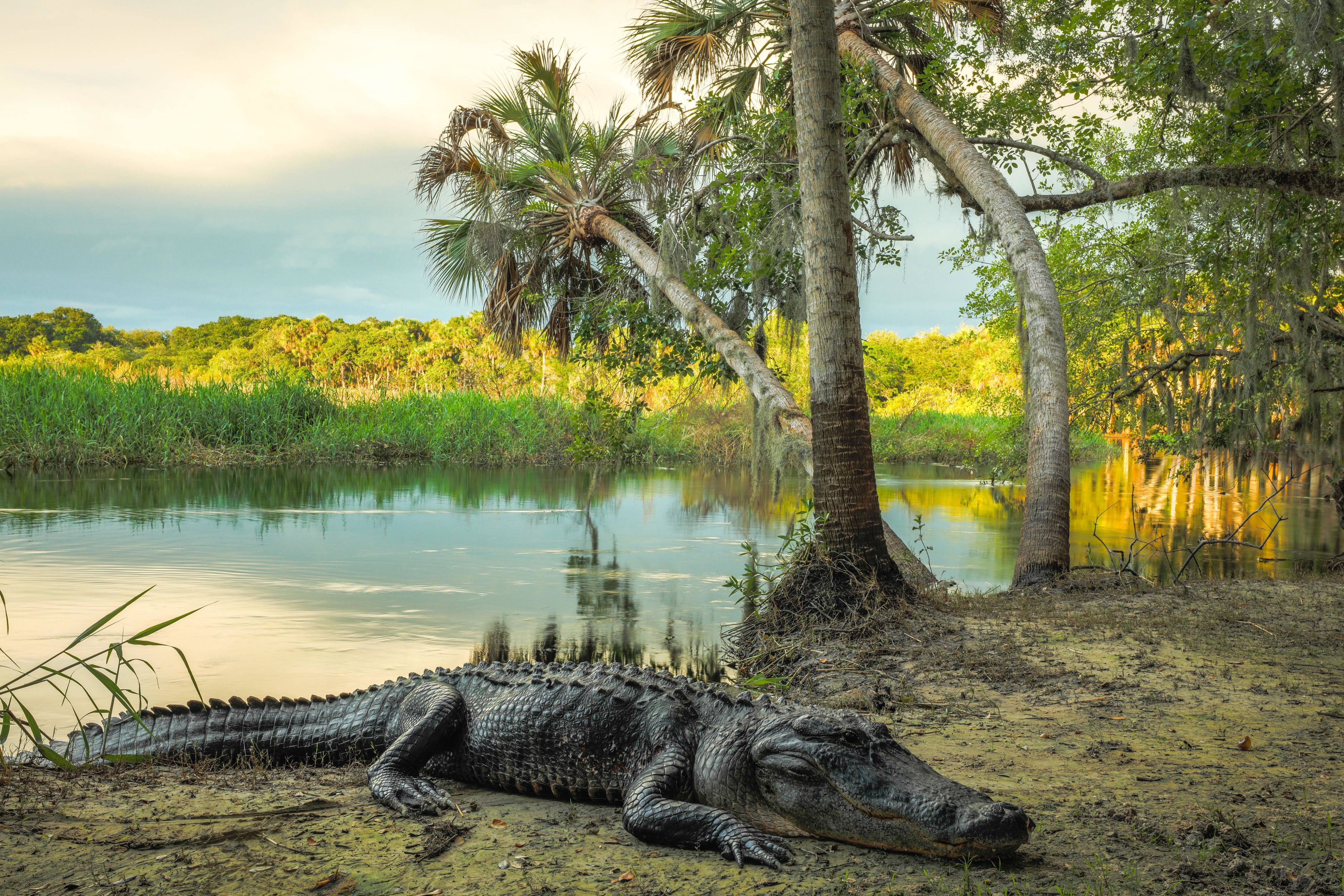
Photo by Connor Howe
Photo by Connor Howe
American Alligator (Alligator mississippiensis)
The American alligator is one of two crocodilians native to Florida. They prefer freshwater lakes and slow-moving rivers and their associated wetlands, but they also can be found in brackish water habitats and rarely in salt water.
Their diets include prey species that are abundant and easily accessible. Juvenile alligators eat primarily insects, amphibians, small fish, and other invertebrates. Adult alligators eat rough fish, snakes, turtles, small mammals, and birds.
Alligators regulate their body temperature by basking in the sun or moving to areas with warmer or cooler air or water temperatures. Alligators are dormant throughout much of the winter. During this time, they can be found in burrows that they construct adjacent to an alligator hole or open water, but they occasionally emerge to bask in the sun during periods of warm weather.
The American alligator is Federally protected by the Endangered Species Act as a Threatened species, due to their similarity of appearance to the American crocodile, and as a Federally-designated Threatened species by Florida’s Endangered and Threatened Species Rule.
This mural is made possible by the support of the following. Thank you.
Sponsor
The Lowry Murphey Family Foundation, Inc.
In-Kind Sponsor
Sunbelt Rentals
Partner
Ernesto Maranje
